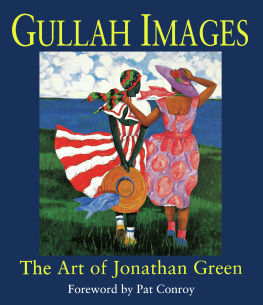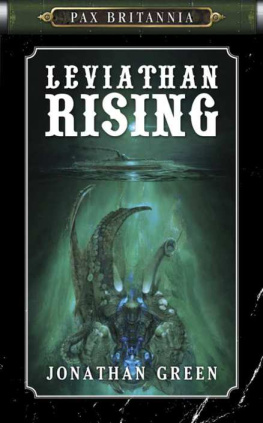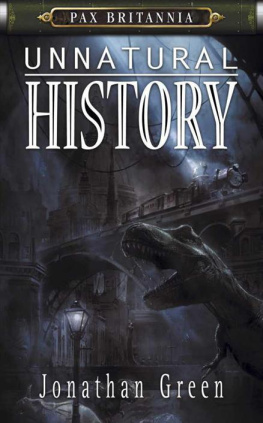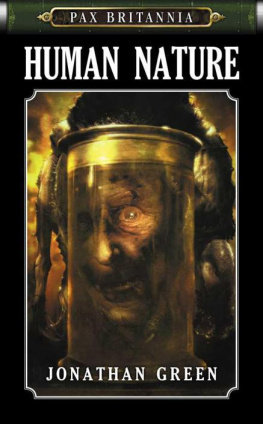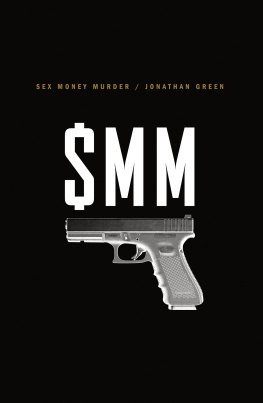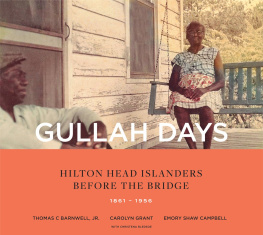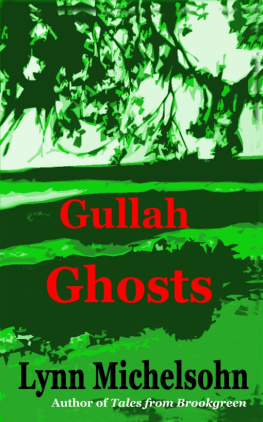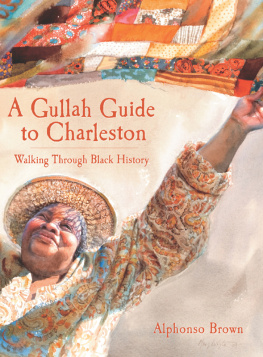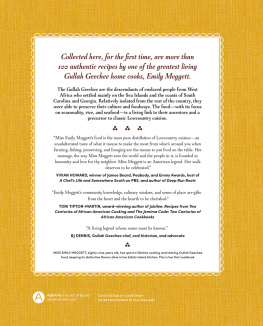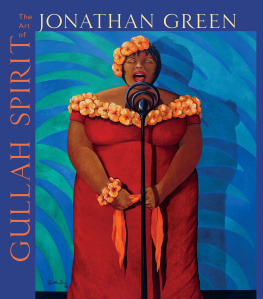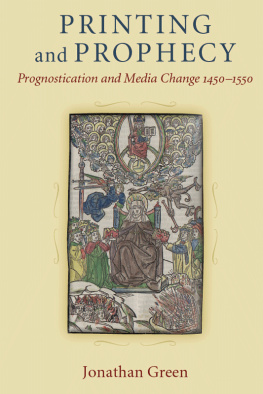Jonathan Green - Gullah Images
Here you can read online Jonathan Green - Gullah Images full text of the book (entire story) in english for free. Download pdf and epub, get meaning, cover and reviews about this ebook. year: 2020, publisher: University of South Carolina Press, genre: Art. Description of the work, (preface) as well as reviews are available. Best literature library LitArk.com created for fans of good reading and offers a wide selection of genres:
Romance novel
Science fiction
Adventure
Detective
Science
History
Home and family
Prose
Art
Politics
Computer
Non-fiction
Religion
Business
Children
Humor
Choose a favorite category and find really read worthwhile books. Enjoy immersion in the world of imagination, feel the emotions of the characters or learn something new for yourself, make an fascinating discovery.
- Book:Gullah Images
- Author:
- Publisher:University of South Carolina Press
- Genre:
- Year:2020
- Rating:4 / 5
- Favourites:Add to favourites
- Your mark:
- 80
- 1
- 2
- 3
- 4
- 5
Gullah Images: summary, description and annotation
We offer to read an annotation, description, summary or preface (depends on what the author of the book "Gullah Images" wrote himself). If you haven't found the necessary information about the book — write in the comments, we will try to find it.
Gullah Images — read online for free the complete book (whole text) full work
Below is the text of the book, divided by pages. System saving the place of the last page read, allows you to conveniently read the book "Gullah Images" online for free, without having to search again every time where you left off. Put a bookmark, and you can go to the page where you finished reading at any time.
Font size:
Interval:
Bookmark:

The Art of Jonathan Green
The Art of Jonathan Green

UNIVERSITY OF SOUTH CAROLINA PRESS
For Richard D. Weedman
Artwork and captions 1996 Jonathan Green
Foreword 1996 Pat Conroy
Jonathan Green in Motion 1996 Bettye J. (Mbitha) Parker Smith
Walking with His Peers 1996 Lynn Robertson
Gathering Light in the Gray City 1996 Ronne Hartfield
Hardback edition published by the University of South Carolina Press, 1996
Ebook edition published in Columbia, South Carolina,
by the University of South Carolina Press, 2020
29 28 27 26 25 24 23 22 21 20
10 9 8 7 6 5 4 3 2 1
Permission to reproduce any image included in this book must be obtained in writing from:
Jonathan Green Studios, Inc., 316 Morgan Road, Naples, Florida 33961.
The Library of Congress has cataloged the hardback edition as follows:
Green, Jonathan, 1955
Gullah images: the art of Jonathan Green
p. cm.
Includes index.
ISBN 1-57003-145-2 (cloth)
1. Green, Jonathan, 1955 Themes, motives. 2. Gullahs in art.
I. Title
ND237.G6169A4 1996
759. 13dc20 9625200
ISBN 978-1-57003-145-8 (hardback)
ISBN 978-1-64336-167-3 (ebook)
Front cover illustration: Daughters of the South, 1993. Oil on canvas, 72 72".
Courtesy of Julia J. Norrell.
Pat Conroy
Bettye J. (Mbitha) Parker Smith
Lynn Robertson
Ronne Hartfield
Pat Conroy
When Jonathan Green came into the world, he brought with him an inescapable sign of his specialness. He was born wearing a caul, an inner fetal membrane that covered his head at birth. In some societies, this is interpreted as a token of great luck or that this child will never know death by drowning. But in the Gullah society along the South Carolina coast, it insures that the child is touched by an uncommonness and magic that will bring inordinate grace to the community. From the beginning, Jonathan Green was marked and grew up known as the child of the veil.
Jonathan Green, an artist indigenous to Beaufort County, South Carolina, is in the middle of a career that finds him painting the autobiography of his childhood. He paints what made him, the source he issued out of, the forms that inspired his rare sensibility. It is this singular, unshakable vision that gives his work its aura of astonishing originality. Each one of his paintings looks as though it were a commemorative stamp imagined out of the backcountry of Jonathan Greens unconscious. He is the immaculate, real thing, and his art is a cry of pure love for his community, his family, and the geography of the Carolina Sea Islands.
In his art, Jonathan Green is that rarest of twentieth-century painters in that he dares to tell a story. There is a strong narrative flow that binds his work to a central theme. By capturing the essence of the Gullah culture that raised him, there is a sense of both celebration and rediscovery to all his work. His paintings contain some of the primitive, raw beauty I once saw when I visited the cave paintings of our Cro-Magnon ancestors in the Dordogne Valley of France. They possess that kind of mythic grace and nameless grandeur that I observed in those thrilling, ill-lit French caves filled with fabulous images over ten thousand years old. Like those anonymous cave painters, Jonathan Green paints what he considers sacred and essential and mysterious in his own life. It remains a primitive urge for the artist to search for a definition of self that he can live by, and Jonathan Green chose to illuminate the life of his community along Highway 21 from Gardens Corner to Yemassee. By narrowing his vision so finely, he discovered himself as an artist and made his works both magisterial and universal. By returning to the source, he discovered the inexhaustible mainstream of his lifes work. Because he so fully understands what he is doing and why, there is never a false note registered on his canvases. Few painters can match Jonathan Greens shining authenticity.
If you study his work carefully, you can detect the peacock-tail love of color found among Haitian painters, then on a much deeper level, you begin to sense the timelessness of Africa. The influence of African culture is still found today in Beaufort County in rich and delightful ways and the imprint of the lost and scattered tribes is still written on the faces of the Gullah people. Jonathan Green himself possesses a face of exceptional beauty that makes you think of exiled princes. When he speaks of his dreams, you know that he sometimes paints from images stolen from his sleeping life. You also know that he dreams in fabulous colors. His use of bright colors is reckless enough that he could easily land a job painting new species of parrots and songbirds in some undiscovered rain forest. The Gullah people depicted in Jonathan Greens world look like they got dressed while staring at rainbows. His art is a love song to his past. You imagine him singing as he paints, an ode to joy and the bright astonishment of memory.
In the South where Jonathan Green and I were born, we could not have sat together on the same bus, drunk from the same water fountain, attended the same school, sat in the same waiting room at a doctors office, worshiped the same God together, or voted in the same election. It was a hard, unregenerate South we were born into, one obsessed by race, and it was the one part of the country where a white man would never be asked to write an introduction to a book praising a black mans art. Both of us came of age during the Civil Rights movement and both of us lived in Beaufort when Martin Luther King and his lieutenants came to Penn Center on St. Helenas Island to plan the marches and demonstrations that would change our part of the world. The Ku Klux Klan would meet along the same Highway 21 where most of Jonathans paintings have their origin. I attended an all-white Beaufort High School, yet he graduated from that same school, fully integrated, ten years later. Both of us share an ardent love of Beaufort County and both believe it is one of the loveliest parts of the planet, but our Beauforts are still two different places, worlds apart in both texture and time.
I had been a fan of Jonathan Greens work, having admired his paintings in Elayne Scotts Red Piano Too Gallery on St. Helenas Island long before I met him. His work reminded me with startling clarity of the one year I spent teaching black children on Daufuskie Island, the first year that white teachers were sent to formerly all-black schools. My stay on the island had ended badly when the superintendent fired me one Friday night, but he could not dim the powerful associations I had built up between my students and their parents. I had fallen in love with the people of Daufuskie Island and I wrote my book The Water Is Wide to give voice to that love. Jonathan Greens art took me directly back to that time when I steered a boat out across the marshes of Beaufort County to teach everyday. Here were the oystermen I passed in the river, the baptisms in the small creeks, the yards full of children and chickens and dogs, the companionship of women, the wisdom of old men, the dignity of cattle and hogsall of it coming out in a great tide of artistic labor. He was painting the life that he had led and the one I had been allowed to visit for a single year of my life, and like a fine novelist, Jonathan Green was getting all the details right.
Font size:
Interval:
Bookmark:
Similar books «Gullah Images»
Look at similar books to Gullah Images. We have selected literature similar in name and meaning in the hope of providing readers with more options to find new, interesting, not yet read works.
Discussion, reviews of the book Gullah Images and just readers' own opinions. Leave your comments, write what you think about the work, its meaning or the main characters. Specify what exactly you liked and what you didn't like, and why you think so.

